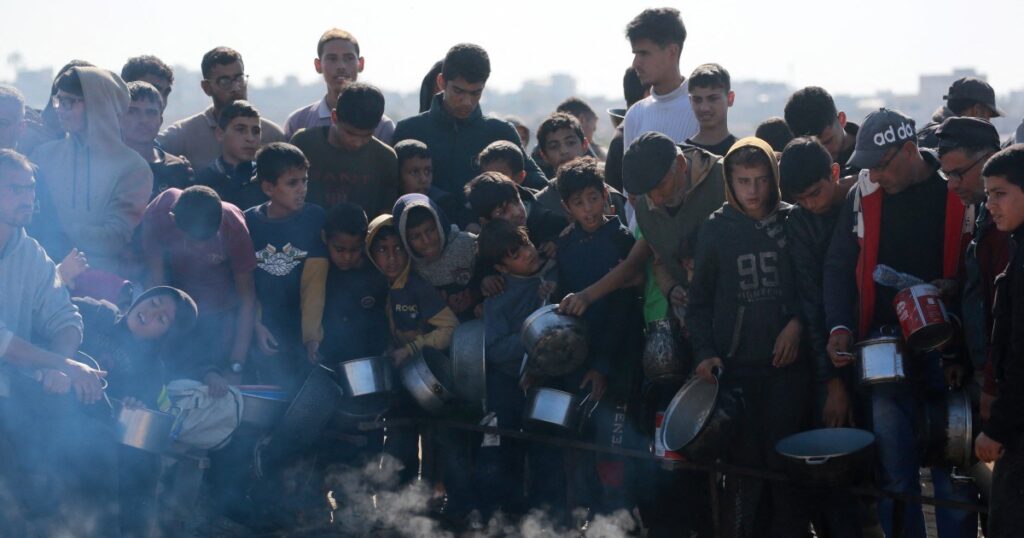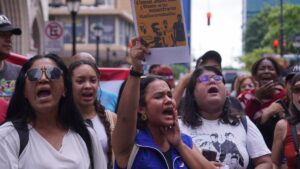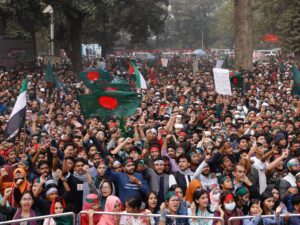
Winter has now come to the Northern Hemisphere and has ushered in a festive mood in many places. In Gaza, it has brought more misery. The cold weather and rain have made the lives of the 1.9 million Palestinians displaced in Gaza that much more unbearable.
It has rained hard several times already. Each time, tents of the displaced have been flooded, damaged, or destroyed, and what little some have had, has been taken away by the floodwaters.
That has left many destitute families even more destitute. A new tent in Gaza right now can go up to $1,000. A makeshift shelter – with the wood and plastic needed for cover – costs hundreds of dollars. A new blanket can be as much as $100. No one in the camps has such sums of money.
Many of the displaced had run away from the bombs with just the clothes on their backs. Some have tried to salvage clothes from the rubble, but few have succeeded.
As winter approached, the prices of clothes skyrocketed. A light pyjama now costs $95; a coat – as much as $100. A pair of shoes – a rare commodity – can go for as much as $75. Second-hand clothes markets have appeared throughout Gaza to address overwhelming demand, but the prices there are also too high.
Advertisement
As a result, the camps are full of people shuddering in the cold in thin summer clothes. Children walk around barefoot in the mud and puddles.
Fuel for heating, which is either unavailable or unaffordable for most families. The cost of 8kg of gas has reached $72. Wood is a bit less, but also too expensive for most.
The lack of clothes and fuel for heating is increasing the risk of colds, flu and other diseases during the winter which in Gaza can become life-threatening. A malnourished, vulnerable body, exhausted by fear and trauma, struggles even against a simple cold.
Gaza’s hospitals are barely functioning, taking care mostly of people gravely wounded in the bombardment. Suffering from a lack of supplies and staff, they can no longer provide care for simple illnesses.
Diseases are spreading also because hygiene has also become nearly impossible to maintain. Living in in tents, without access to warm water, the displaced cannot shower or sometimes even wash their hands. A bar of soap is now $5, while a bottle of shampoo can be as much as $23.
But perhaps the most unbearable fact of life in Gaza now is the famine. The amount of humanitarian aid that has entered Gaza has significantly decreased since October and we have felt its devastating impact across the Strip. It is not just the north that is experiencing famine. All of Gaza is.
The price of what little food is available is beyond belief. A single sack of flour now costs more than $300. Other foodstuffs have also become expensive. A kilo (2.2 pounds) of lentils or a kilo of rice is $7. Vegetables are hard to find and also very expensive; 1kg of tomatoes is $14; a single onion is $2. Red meat and chicken cannot be found at all. We have not seen any for months.
Advertisement
The bakeries that were once a lifeline for families are closed because they can’t get supplies. Bread, the simplest and most basic of foods, has become a luxury few of us can afford. Even if a family is able to get flour, it is often infested with bugs and tastes stale.
People are now forced to rely on “takaya” – charity soup kitchens – that provide small portions of food that are barely enough for a family. These organisations open at 11:00am, which results in large queues forming in front of their distribution centres. Most families who manage to get a meal from them have nothing else to feed their children.
Hunger is not just limited to the physical pain that starving people experience. It also has an unbearable psychological impact. Parents are forced to watch their children cry for food during the long, cold nights. Some parents have also had to watch their children die from starvation. This psychological torment cannot compare to anything else.
As I write these words, I am starving myself, having eaten nothing since morning. As I look around me, I see children and adults, pale and thin, exhausted by hunger and cold. I wonder how much more they can take; how much more any of us can take?
The cruellest part of this suffering is the silence of the world that watches from afar but doesn’t act. As the cold bites us and the hunger makes it worse, we are feeling isolated and abandoned, like we have been cut off from the rest of humanity. And as much of the world prepares for a holiday season, we prepare to face loneliness, despair and death.
Advertisement
The views expressed in this article are the author’s own and do not necessarily reflect Al Jazeera’s editorial stance.











More Stories
Ecuador confirms charred bodies belong to four missing boys
Syria de facto leader al-Sharaa meets Christian clerics
Thousands march in Bangladesh calling for prosecution of overthrown PM